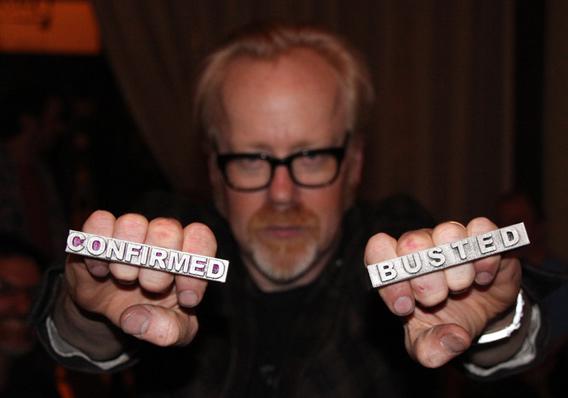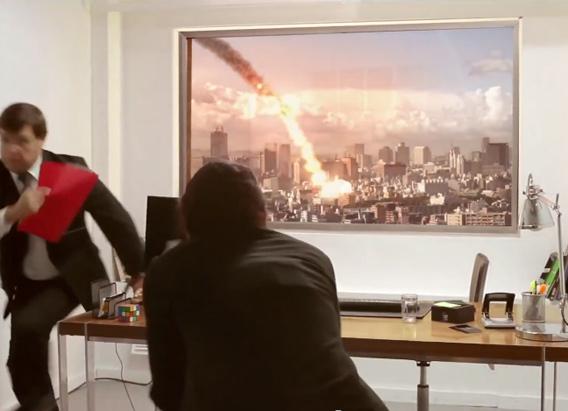[Note: Most of the numbers I’ll be using in this post are in what I increasingly think of as “American units”: inches and so on. The sizes of TV screens are listed in inches by their manufacturers, so I use those for the calculations below; while actually doing the math, I figure units are just units, and I don’t care what they are until I’m done. At that point I convert to metric as needed.
Also, this post does contain math, which is both fun and awesome. If you disagree, then a) you’re wrong, and 2) you can skip to the bottom where I draw my conclusions.]
I’ve been meaning for a while to write about the next generation of TVs to come out: The ultra-high-resolution 4K sets. While an HD TV has 1920 x 1080 pixels in its screen, the new 4Ks have a whopping 3840 x 2160. That’s four times the number of pixels! In other words, a 4K TV will have twice the horizontal/vertical resolution of an HD TV that’s the same physical size (say, a 55” diagonal screen).
A few companies are already selling 4K sets, and I just heard that a couple of them have models that are flippin’ huge: The screen is a whopping 84” across diagonally. That’s actually over six feet across, nearly two meters! Yowza. I have no use for a TV this big, but geez, a little part of my brain is definitely pinging me, saying “WANT.”
The Impact of Advertising
Of course, advertising something like that is difficult, given that customers will be watching any ads on a screen that almost by definition* will have lower resolution. So, to demonstrate just how good their screen is, the folks at LG put together a clever ad that’s currently going viral. They installed a TV in the wall of a room like it was a window, and then displayed a video of the cityscape. If you walked into the room, you’d think you were looking out a window. They then set up a fake job interview and invited applicants into the room… it’s actually pretty funny, if you like incredibly cruel pranks.
I’ll admit: I laughed (though I felt sorry for the folks who were pwned). However, I have to make a quick science comment, and say this wouldn’t have fooled me for more than a fraction of a second. Why? Because an asteroid coming in like that would be moving, far, far faster than the speed of sound, and you wouldn’t hear the rumbling or experience any shaking from it until after it hit the ground. The whole event would be silent until the sound actually reached you. Remember in February 2013, when a small asteroid blew up over Chelyabinsk, Russia? The whole thing was silent until the shock wave slammed into the ground quite a bit later.
OK, so I would’ve passed that test. Probably; it’s also possible my freaked-out brain wouldn’t have had the wherewithal to think about the ratio of the speed of light to that of sound. But either way, it got me thinking:
Is this ad for real? Or was it staged with actors?
If they’re actors, they’re good. They look appropriately terrified. You can argue endlessly about human behavior and try to figure out if it’s fake by their reactions, but I thought of another way. Could they be fooled into thinking a high-resolution TV was actually a window? Would there have been a way to tell the difference?

Photo by YouTube/Евгений Славенков
Resolving the Issue
The answer, in principle, is “yes”. Televisions have pixels, tiny dots which light up with different colors and brightness, which, when put together into a screen, present a moving image to the eye. If the pixels are very small you can’t see them individually, and they blend into a smooth image. If they are big enough, though, you can see them, and the picture looks chunky, pixelated.
So this comes down to the issue of resolution and pixel size. To fool someone sitting at the desk in the ad, the pixels in the TV set would have to be small enough to blend together from that distance so the picture looks smooth and realistic. Any closer, and the eye sees individual pixels and the illusion is ruined.
In the ad, I’d guess the victims were perhaps six feet (just under two meters) from the TV, maybe seven or eight to be generous. Is that enough to trick them?
Crunching Numbers
It turns out the math for this isn’t that hard to do. I explain it all in detail in a post I wrote back when Apple’s “retina display” came out. The bottom line is that the resolution of a human eye with perfect vision is about 0.6 arcminutes (where there are 360 degrees in a circle, and an arcminute is 1/60th of a degree). A pixel should be smaller than that to get a smooth picture.
In the ad, the TV has an 84” screen (actually 83.9” if you look at the specs, but close enough). The TV has a format of 16 x 9, which is now fairly standard for big TVs. Doing a little Pythagorean algebra (the square of the hypotenuse is equal to the sum of the squares of the other two sides), the TV screen has dimensions of 73.1” wide by 41.1” tall.
If that corresponds to 3840 x 2160 pixels, then each pixel is a square 0.019” on a side, or about 1/50th of an inch if you prefer. That’s pretty small. But how far away do you have to be before a pixel that size is too small to see with the human eye?
As I wrote in that earlier post, the magic number is 5730: To appear as a dimensionless dot, an object has to be at least 5730 times its own size away from you. As an obvious example, a 12” ruler would have to 5730 feet away to look like a point. That’s a little over a mile.
So, if a pixel on a 4K TV is 0.019” across, it has to be 0.019 x 5730 = 109” away to create a smooth picture. That’s nine feet (2.8 meters). As I said, the victims in the ad were closer than that to the TV, so they should’ve seen the image as pixelated! Busted!
…but wait. That nine foot distance is under ideal conditions, and for someone with perfect vision. In reality, we can probably ease up on that somewhat. There are various arguments for how small an angle the human eye can actually see, and in fact the idea of the resolution of the human eye gets a bit nitpicky, too.
If, for example, you use 1 arcminute for the resolution of the human eye (which is probably more reasonable for average people), you find that you could be as close as 65”, or 5.5 feet (1.7 meters) to the TV and not see the pixels.
But the people in the ad were farther than that from the TV. That means that if they had average vision, they wouldn’t have seen individual pixels. It also seems obvious that it’s easier to fool people if they have no clue they’re being manipulated. If they actually thought they were looking out a window, they might ignore any very small pixelation in what they saw. Our brains are great at ignoring visual evidence they think contradicts what is “true”. Don’t believe me? Then go here and tell me what you think. Better yet, watch this video and melt your brain.
So my conclusion here is that it’s entirely possible the people in the ad could’ve been fooled by the TV. I’m not saying the situation wasn’t done with actors, just that the math supports the idea that it could be real.

Photo by Phil Plait. Model: Adam Savage. Rings by Ryan Consell.
Math Delusion
I poked around looking for any more evidence this commercial was a put-on, but haven’t found any. To be honest, I don’t really care! If it’s a fake, it’s funny, and well-done. And the point is the TV does have a high-enough resolution and small enough pixels that you could fool people into thinking they were looking out a window.
I have to rate this ad as: PLAUSIBLE.
[UPDATE (Sep. 9, 2013 at 16:00 UTC): A few people have pointed out that parallax might be an issue. If you move your head while looking out a real window, the angle on the scene outside changes, but that won’t happen when looking at a TV. This could give away the fake. However, the scene on the TV in the ad shows distant objects, and parallax may not be that obvious, especially in the heat of the moment. I’ll grant this does seem to make the prank less likely to be real, but I don’t think it’s necessarily a deal breaker.]
I’ll be honest: Even if it turned out to be faked, or even marginal, it wouldn’t change the fact that I want one of these TVs. A lot of photographers shoot time-lapse video in native 4K, and those would be spectacular on a set like these. If 4K ever becomes standard, it may lead to yet another decline in theater attendance, too.
Still, in the end, the fearsome price tag is enough to keep me away. Plus, you need a big room for them. Five feet is the minimum distance to blend pixels, but you need to sit even further back to be able to take in a view that wide; twice that far or more. The fact is I don’t have a room in my house big enough to hang one of those monsters and still be able to have furniture arranged well for viewing. I’d literally have to knock down a wall and extend my current den to make it fit, and that seems like a terrible way to…
…resolve that problem.
Tip o’ the remote control to Geekologie.
* “By definition”, when talking about how sharp a picture is! Get it? Man, I kill me.
